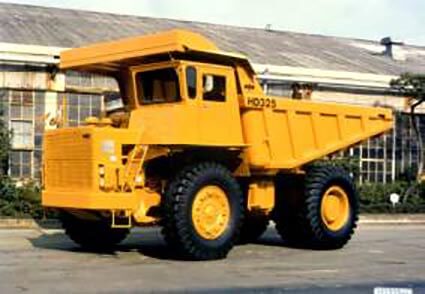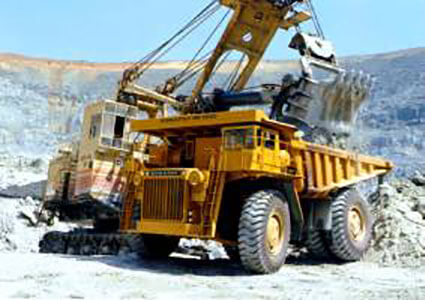1970
Since this era, the focus of domestic demand gradually started shifting from bulldozers to hydraulic shovels. Additional considerations, such as ease of operation, also became an important aspect of design.

As previously mentioned for HD1200 (electric drive), it was difficult to develop a very large model that was driven mechanically. At the time the biggest models were 78 ton made by WABCO (later became Dresser and Komatsu America after the merger) and CAT.
Komatsu's largest model was 68 ton.
Dumps with mechanical drive were good for continuous climbing, and it did not require electricians for maintenance. For these reasons, there was high demand for larger size dumps. However, in order to make it bigger, it was necessary to develop a transmission that could handle 1,000 horsepower.

Komatsu's research and development team skipped 78-ton class and started working on a Dump truck of 100-ton class. From the beginning, their ultimate goal was to eventually enlarge it to 120-ton, so they decided to install a full automatic transmission of 1,200 horsepower. First, HD1000 (bottom photo) was developed as a prototype, and then the world's largest HD1200M (M=Mechanical drive) was developed. HD1200M (upper photo)
Load capacity: 120,000kg
Dump truck
The history of the dump truck as a transporting vehicle is also the history of increasing the amount of loading to improve productivity at construction sites. At mines especially, new technology is being introduced consistently even today. Enlarging the size by mechanical and electrical formulas, and adding the GPS control system are some of the examples.